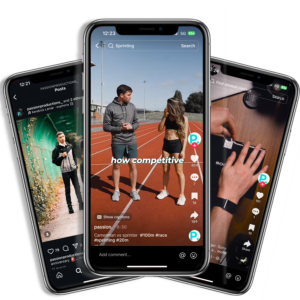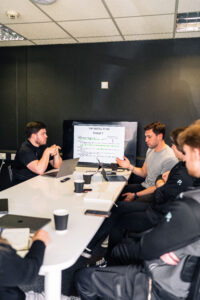If you’ve ever run a Meta campaign and wondered whether to prioritise Facebook or Instagram, you’re not alone.
While both platforms fall under the same Meta Ads umbrella—and are managed through the same dashboard—they operate very differently in terms of audience behaviour, content style, and performance patterns.
Understanding these differences is crucial to getting better results from your ad spend. More than that, it allows you to design campaigns that feel native to each platform, resonate more deeply with your audience, and convert more effectively.
At Passion, we manage paid social campaigns for a wide range of businesses—from local Liverpool service brands to nationwide eCommerce retailers. And we’ve learned that the best-performing campaigns aren’t “one size fits all.” They’re adapted to the mindset of the person scrolling—not just the platform’s features.
Let’s break down what sets Facebook and Instagram apart—and how to make them both work for your business.
Audience Demographics and Behaviour
Facebook tends to attract an older, broader audience. While still a powerhouse of social media with over 2.9 billion users, its strength lies in:
- Community engagement (groups, events, discussions)
- Local discovery and service provider research
- Long-form content consumption (posts, reviews, videos)
It’s ideal for:
- B2B services
- Local lead generation
- Home services, healthcare, legal, and education sectors
Instagram, on the other hand, is highly visual, mobile-first, and more popular among a younger demographic (18–34). It thrives on:
- Aesthetic visuals
- Short-form video (Reels)
- Influencer-style content
- Brand lifestyle storytelling
It’s ideal for:
- eCommerce brands
- Fashion, beauty, fitness, and lifestyle
- Viral product launches and UGC-driven campaigns
At Passion, we tailor audience targeting and creative formats based on where your best customers spend their time—and how they engage.
Content Formats and User Expectations
While both platforms support similar ad types (image, carousel, video, stories), how users interact with those ads is very different.
On Facebook:
- Users are more open to text-led messaging and benefit-driven ads.
- They often read headlines and descriptions fully.
- It’s a great platform for case studies, reviews, and longer narratives.
- Facebook Lead Ads and Messenger-based campaigns perform particularly well for service-based businesses.
On Instagram:
- Attention spans are shorter—your creative needs to grab attention immediately.
- Visual storytelling is king. Product demos, Reels, and influencer-style visuals are ideal.
- Captions are read less often—so the message needs to be in the creative.
- Instagram Shopping, product tagging, and Reels Ads are ideal for DTC sales.
When building campaigns at Passion, we often design platform-specific creatives, even within a single ad set—ensuring that your ad feels natural to the user experience on each app.
Placement Performance: Stories, Feed, and Reels
Meta gives you the option to serve ads across both platforms automatically (Advantage+ placements), but it’s often best to customise placements intentionally.
- Facebook Feed: Great for more detailed messaging, reviews, and video explainers.
- Instagram Feed: Strong for product visuals, lifestyle imagery, and brand storytelling.
- Facebook Stories: Often underused, but great for quick retargeting messages.
- Instagram Stories & Reels: High engagement, especially when creative is UGC-style or dynamic.
We use a blend of automatic placements and manual overrides at Passion—testing performance by format, not just by channel, to maximise CTR and conversions.
Engagement and Conversion Intent
Instagram tends to drive higher engagement rates (likes, saves, shares), but Facebook often drives higher conversion intent—especially for lead generation and B2B.
For example:
- A Liverpool-based dental clinic might get stronger lead volume from Facebook Lead Ads than from Instagram.
- A skincare brand might drive more website traffic and sales from Instagram Reels and Shopping tags.
- A local estate agent may use Facebook’s event, community and group integrations to build trust and repeat engagement.
That’s why we often split test the same offer across both platforms—with tailored creative and messaging—to see which channel delivers the best ROI for each part of the funnel.
Facebook and Instagram aren’t competitors—they’re partners in a bigger ecosystem. The key is understanding who your customer is, how they scroll, and what message they need to hear at each stage of the journey.
At Passion, we don’t just launch ads—we launch channel-optimised campaigns that make the most of both platforms’ strengths. Whether you’re trying to generate leads for a local Liverpool service or drive eCommerce sales nationwide, we’ll help you build a Meta strategy that hits on all fronts—visually, strategically, and financially.




